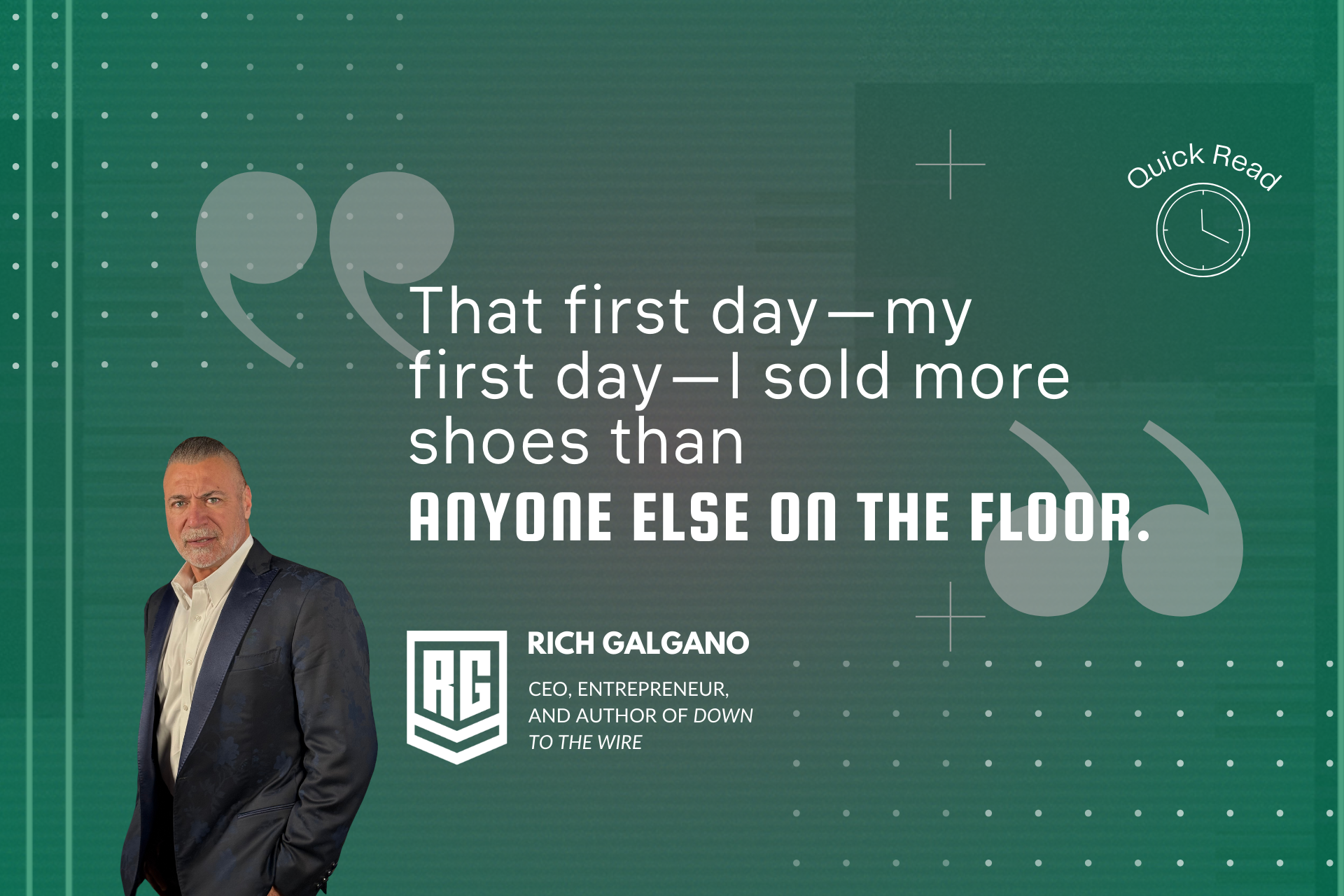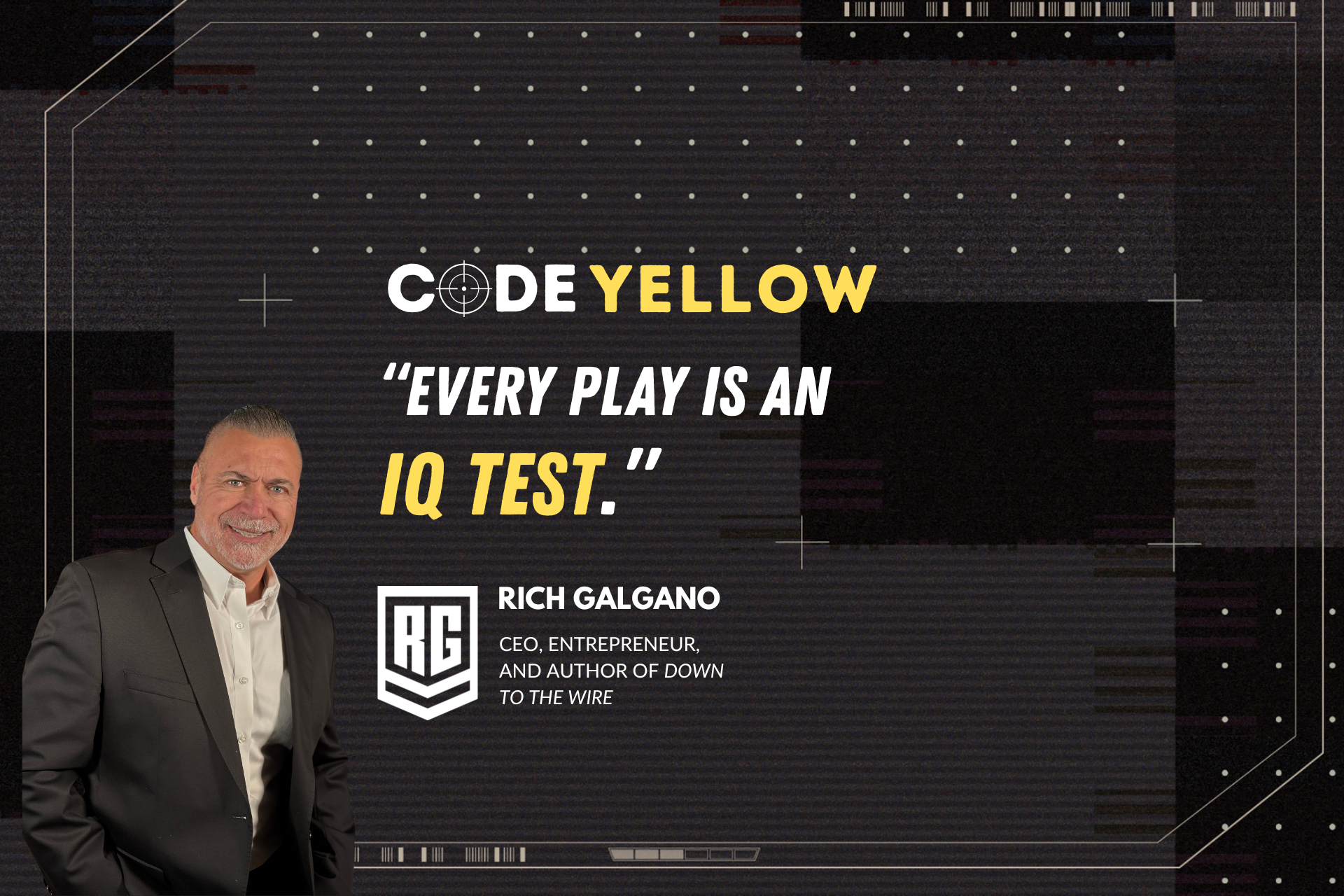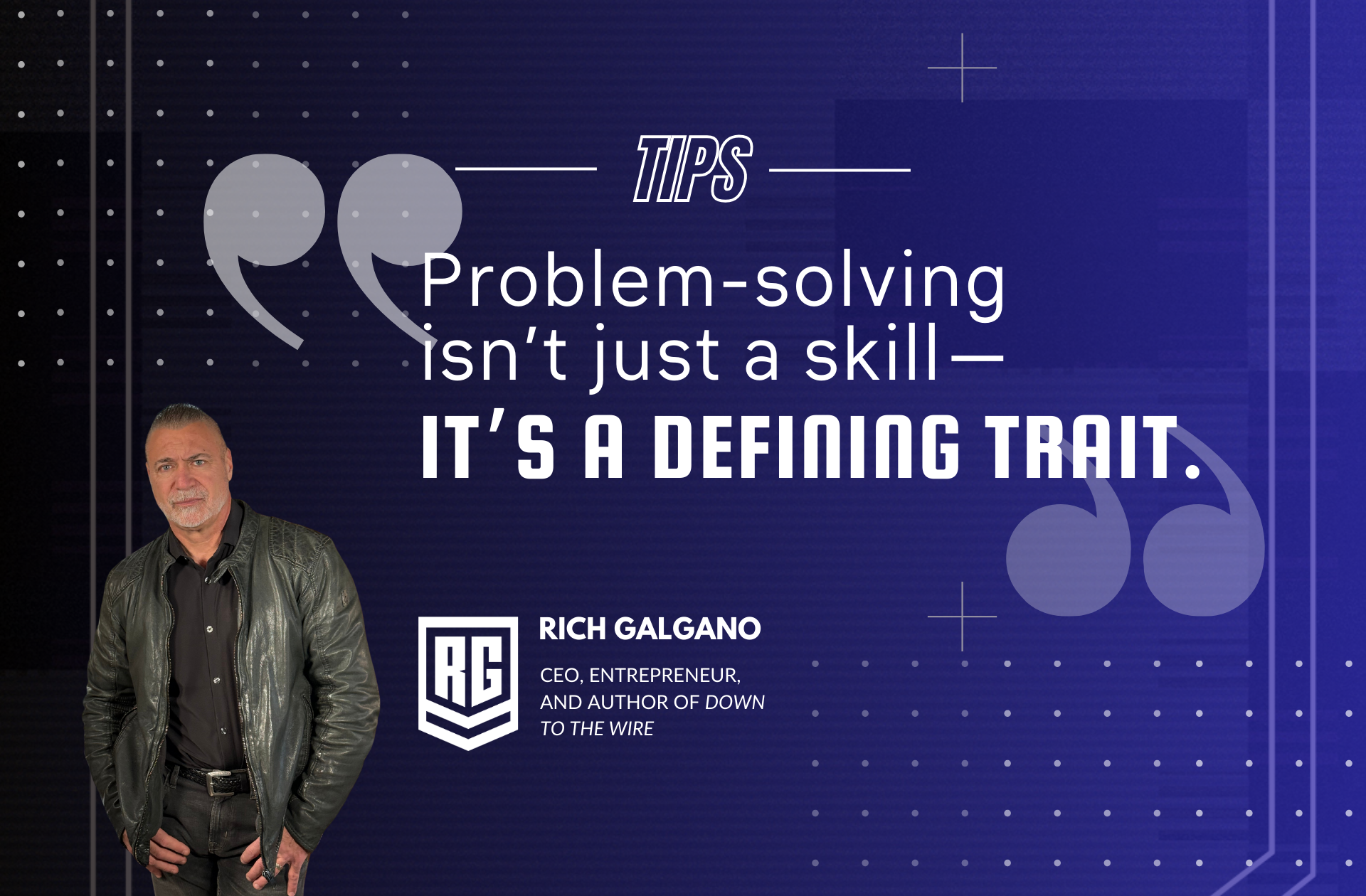"It's Not What You Say, It's How You Say It": Mastering the Art of Framing in Sales
By Rich Galgano
Sales isn’t about having the best pitch or the best product. It’s about how you frame the conversation. Because the reality is this—it’s not what you say, it’s how you say it.
What’s framing? It’s the ability to take one single idea and say it five different ways until you land on the one way that gets the response you want.
✔ It’s not just about asking questions. It’s how you ask them.
✔ It’s not about selling a solution. It’s how you present it.
✔ It’s not about being right. It’s about making them feel like they made the right choice.
The Insult Test: How Framing Changes Everything
Let’s say someone is terrible at their job. If I just flat-out say:
"Damn, you suck at this." (They’re gonna be pissed, defensive, and probably not like me too much.)
But if I frame it differently…
"Man, I gotta give you credit—you’re really committed to doing it your way." (Now they think I admire their stubbornness, even
though I just said they suck.)
Or even better…
"You know what I respect? You don’t let traditional methods get in your way." (They might even thank me, while I just called them
incompetent.)
Same message. Different delivery. Wildly different reaction.
That’s framing. That’s how the best salespeople engage, lead, and close.
Sales is About Leading, Not Telling
If you’re successful in sales, it’s because you know how to guide people.
Your job is not to say, "Hey, buy this from me."
Your job is to lead them down a path where they realize,
"This is the best choice for me."
And when done right?
They think they made the decision—but we led them there the whole damn time.
The Same Question, Asked 5 Ways, Gets 5 Different Answers
Let’s say I need to find out who my prospect buys from.
Bad Approach:
"Who do you buy from?" (Sounds like an interrogation. Walls go up.)
Better Approach:
"Whose product have you had the most success with?" (Now it feels like you’re respecting their choice.)
Even Better:
"So that's your preferred choice?" (Now they feel in control and start telling you what matters to them.)
Best:
"Are there any specific brands that you refuse to deploy?" (Now they tell you who they DON'T work with, which usually leads to them telling you who they DO work with.)
Same question. Different phrasing. One gets shut down. One gets a real answer.
Make Them Think It's Their Idea
Here’s a secret: People hate being told what to do.
Bad Approach:
"You need to upgrade to this system." (They immediately resist.)
Better Approach:
"If you were to upgrade, what would matter most to you?" (Now they’re thinking about upgrading—because I framed it as their choice.)
That’s not manipulation. That’s understanding human nature.
The Art of Assumption Close
People struggle with making decisions. If you sense interest, don’t ask—assume.
Weak Approach:
"Would you like to move forward?" (Gives them an easy out.)
Better Approach:
"Let’s set this up for delivery next week. I’ll have it there Thursday—does that work for you?" (Now they’re just confirming the date, not deciding whether to buy.)
Objections Aren't Walls—They’re Opportunities
What we DON’T do:
- Turn objections into problems
- Get defensive or justify
- Apologize for our offer
- Let them control the frame
What Do We Do? We Pre-Frame.
Pre-framing is the art of controlling the conversation before an objection even arises.
Example:
Weak Approach:
"I understand your concern about cost." (Now it’s a problem.)
Strong Approach:
"Your interest and my interest are completely aligned. I’ll do everything in my power to make sure price isn’t a barrier so we can get this done together." (Now, it’s a partnership—not a negotiation.)
Sales is Code Yellow Situational Awareness
Every deal. Every conversation. Every interaction. It’s about reading the person in front of you.
The best salespeople don’t convince people—they lead them.
The best closers don’t sell—they frame.
The best negotiators don’t argue—they guide.
At its core, The Doctrine of Code Yellow (RG DOCY) is about situational awareness. It’s about being locked in, always reading the room, always staying ahead. And at the foundation of that doctrine? The six fundamental questions—Who, What, When, Where, Why, and How.
Mastering these six questions is what separates those who struggle from those who dominate.
It’s why we don’t just talk—we frame.
It’s why we don’t just sell—we guide.
It’s why we don’t just react—we lead.
Because it’s not what we say, it’s how we say it. And when you understand the who, what, when, where, why, and how of every deal, every interaction, every negotiation—you don’t just win more deals. You control the entire game.
That’s
The Doctrine of Code Yellow. That’s sales at the highest level.











